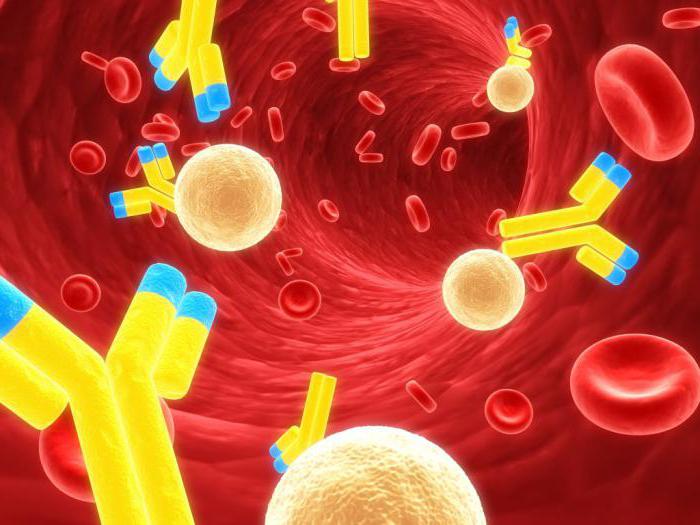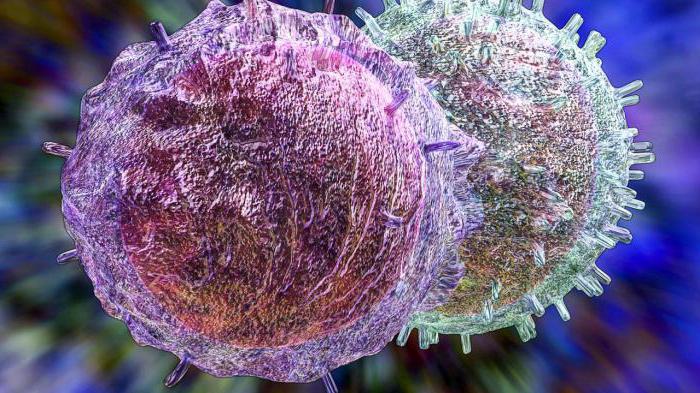Immunity is a word that for most people is almost magical. The fact is that each organism has its own genetic information that is peculiar only to him, and therefore, each person’s immunity to diseases is different.
So what is immunity?
Surely everyone who is familiar with the school curriculum in biology roughly represents that immunity is the body’s ability to protect itself from everything alien, that is, to resist the action of malicious agents. Moreover, both those that enter the body from the outside (microbes, viruses, various chemical elements), and those that are formed in the body itself, such as dead or cancerous, as well as damaged cells. Any substance that carries foreign genetic information is an antigen, which literally translates - “against genes”. Nonspecific and specific immunity is ensured by the holistic and coordinated work of the organs responsible for the production of specific substances and cells, capable of recognizing in a timely manner what is different for the body and what is foreign, as well as adequately respond to foreign invasion.
Antibodies and their role in the body
The immune system first recognizes the antigen, and then tries to destroy it. In this case, the body produces special protein structures - antibodies. They are the ones who defend themselves when any pathogen enters the body. Antibodies are special proteins (immunoglobulins) produced by white blood cells to neutralize potentially dangerous antigens - microbes, toxins, cancer cells.

The presence of antibodies and their quantitative expression determines whether the human body is infected or not, and whether it has sufficient immunity (non-specific and specific) against a specific disease. Having discovered certain antibodies in the blood, one can not only conclude that an infection or a malignant tumor is present, but also determine its type. It is on the determination of the presence of antibodies to pathogens of specific diseases that many diagnostic tests and analyzes are based on. For example, in an enzyme-linked immunosorbent assay, a blood sample is mixed with a pre-prepared antigen. If a reaction is observed, then there are antibodies to it in the body, therefore, this agent itself.
Varieties of Immune Defense
The following types of immunity are distinguished by their origin: specific and non-specific. The latter is innate and directed against any foreign substance.
Nonspecific immunity is a complex of protective elements of the body, which, in turn, is divided into 4 types.
- To mechanical elements (the skin and mucous membranes, eyelashes are involved, sneezing, coughing).
- To chemical (sweat acids, tears and saliva, nasal discharge).
- To the humoral factors of the acute phase of inflammation (complement system; blood coagulation; lactoferrin and transferrin; interferons; lysozyme).
- To cellular (phagocytes, natural killers).
Specific immunity is called acquired, or adaptive. It is directed against selected foreign substances and appears in two forms - humoral and cellular.
Specific and nonspecific immunity, its mechanisms
Consider the difference between both types of biological protection of living organisms. Nonspecific and specific mechanisms of immunity are divided by reaction rate and action. Natural immunity factors begin to protect immediately, as soon as the pathogen penetrates the skin or mucous membrane, and do not preserve the memory of the interaction with the virus. They work throughout the entire time of the battle of the body with the infection, but especially effectively - in the first four days after the virus penetrates, then the mechanisms of specific immunity begin to work. The main defenders of the body against viruses during the period of non-specific immunity are lymphocytes and interferons. Natural killers detect and destroy cells affected by infection with the help of secreted cytotoxins. The latter cause programmed cell killing.

As an example, we can consider the mechanism of action of interferon. In a viral infection, cells synthesize interferon and secrete it into the space between cells, where it binds to the receptors of other healthy cells. After their interaction in the cells, the synthesis of two new enzymes is synthesized: synthetase and protein kinase, the first of which inhibits the synthesis of viral proteins, and the second cleaves foreign RNA. As a result, a barrier of uninfected cells forms near the outbreak of viral infection.
Natural and artificial immunity
Specific and non-specific innate immunity is divided into natural and artificial. Each of them is active or passive. Natural is acquired naturally. Natural active appears after a cured disease. For example, people who suffered the plague did not become infected when caring for the sick. Natural passive - placental, colostral, transovarial.
Artificial immunity is detected as a result of the introduction into the body of weakened or dead microorganisms. Artificial active appears after vaccination. Artificial passive is acquired using serum. With an active body, it creates antibodies on its own as a result of a disease or active immunization. It is more stable and long lasting, it can last for many years and even a lifetime. Passive immunity is achieved with antibodies artificially introduced during immunization. It is shorter, lasts a couple of hours after the introduction of antibodies and lasts from several weeks to months.
Specific and nonspecific immunity differences
Nonspecific immunity is also called natural, genetic. This is a property of the body that is genetically inherited by representatives of this species. For example, there is human immunity to canine and rat plague. Congenital immunity can be reduced by radiation or starvation. Nonspecific immunity is realized with the help of monocytes, eosinophils, basophils, macrophages, neutrophils. Specific and non-specific factors of immunity are also different in time of action. Specific is manifested after 4 days in the synthesis of specific antibodies and the formation of T-lymphocytes. In this case, immunological memory is triggered due to the formation of T- and B-memory cells on a specific pathogen. Immunological memory is stored for a long time and is the core of a more effective secondary immune action. It is on this property that the ability of vaccines to prevent infectious diseases is based.
Specific immunity is aimed at protecting the body, which is created in the process of development of an individual organism throughout its life. When an excessive number of pathogens penetrate the body, it can be weakened, although the disease will proceed in a milder form.
What is the immunity of a newborn baby?
Only a newly born baby already has nonspecific and specific immunity, which gradually, every day strengthens. In the first months of life, the baby is helped by the antibodies of her mother, which he received from her through the placenta, and then gets along with breast milk. This immunity is passive, it is not persistent and protects the baby until about 6 months. Therefore, a newborn baby is immune to infections such as measles, rubella, scarlet fever, mumps and others.

Gradually, as well as with the help of vaccination, the child’s immune system will learn how to produce antibodies and independently resist the causative agents of infections, but this process is long and very individual. The final formation of the child’s immune system is completed at the age of three. In a child younger, the immune system is not completely formed, so the baby is more susceptible to most bacteria and viruses than an adult. But this does not mean that the body of the newborn is completely defenseless, it is able to withstand many infectious aggressors.
Immediately after birth, the baby encounters them and gradually learns to exist with them, producing protective antibodies. Gradually, microbes colonize the baby’s intestines, dividing into useful ones, which help digestion and harmful ones, which do not manifest anything, until the microflora balance is disturbed. For example, microbes settle on the mucous membranes of the nasopharynx and tonsils, and protective antibodies are also produced there. If the body already has antibodies against it when the infection penetrates, the disease either does not develop, or passes in a mild form. The prophylactic vaccinations are based on this property of the body.
Conclusion
It should be remembered that nonspecific and specific immunity is a genetic function, that is, each organism produces the necessary number of different protective factors for it, and if this is enough for one, then it is not for the other. And, on the contrary, one entirely can do with the necessary minimum, while another person will need much more protective bodies. In addition, the reactions that occur in the body are quite variable, since the work of the immune system is a continuous process and depends on many internal and external factors.